This post may contain affiliate links. Please read our disclosure policy.
These soft, buttery cutout almond flour sugar cookies will hold any shape you like, so you can celebrate any holiday and still eat grain free!

Table of Contents
- Why I love these almond flour sugar cookies
- Key ingredients
- How to make almond flour sugar cookies
- What makes a great cutout cookie?
- Combining almond flour and tapioca starch/flour into an all-purpose flour
- Recipe tips & tricks
- Popular ingredient substitutions
- Storage instructions
- FAQs
- Almond Flour Sugar Cookies Recipe
Why I love these almond flour sugar cookies
These gluten free sugar cookies tick all the boxes. Unlike a lot of other gluten free dough, this recipe rolls out beautifully, makes it incredibly easy to cut out any shape you want, and the dough holds its shape fantastically during baking.
And it's so versatile: Christmas cookies, stars, gingerbread people, Christmas trees, bells, hearts, any shape at all. Beautiful heart-shaped almond flour Valentine cookies topped with a rich red frosting or glaze would be perfect.
In a nutshell:
- This recipe always works to make cookies in any shape, for any occasion.
- The texture is tender but firm.
- The recipe is easy to follow.
- The dough is easy to handle, roll, and cut out.
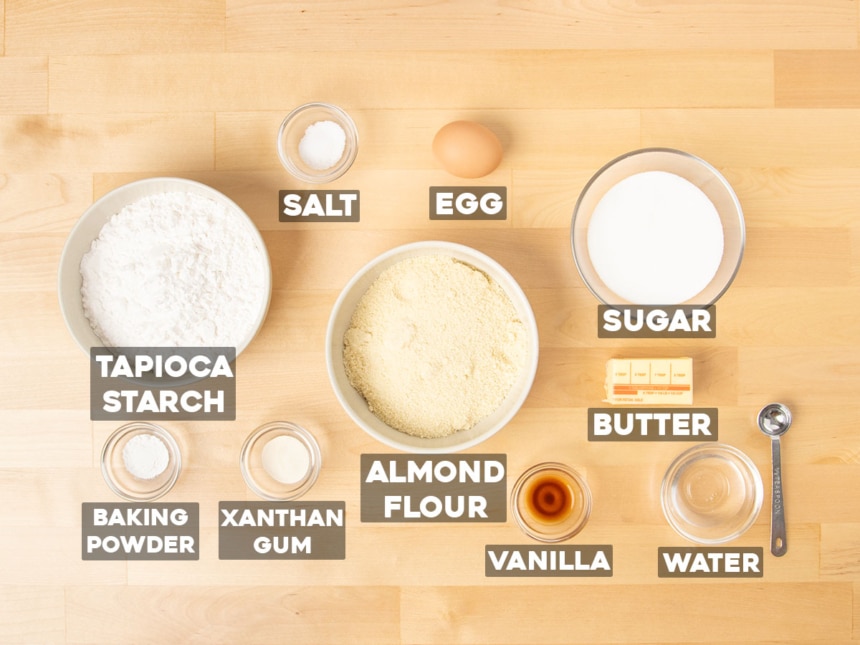
Key ingredients
- Almond flour: The base flour of these cookies; be sure to use a finely ground almond flour. I really like Wellbee's brand, Blue Diamond brand and Costco's Kirkland brand blanched almond flours.
- Tapioca starch: Adds structure, elasticity, and absorbs some of the fat and moisture of the almond flour.
- Xanthan gum: Helps makes the dough easier to work with, and the cookies hold their shape. You can leave it out, or try replacing it with an equal amount of konjac powder.
- Baking powder: Gives the cookies some rise.
- Salt: Balances sweetness and brightens other flavors.
- Sugar: Granulated sugar adds sweetness and tenderness and keeps the cookies light in color.
- Butter: Adds moisture, flavor and tenderness.
- Egg: Binds the cookies together and adds some rise in the oven.
- Vanilla: Adds depth of flavor.
- Water: Helps bind the dough together and make it easier to roll out.
How to make almond flour sugar cookies
Make the cookie dough
- Whisk the dry ingredients (almond flour, tapioca starch, xanthan gum, salt, baking powder, sugar) in a large mixing bowl
- Add melted butter, a beaten egg, vanilla and a bit of water
- Add more water until the dough holds together well in your hand
- Divide the dough in half, press into a disk and sprinkle with tapioca starch
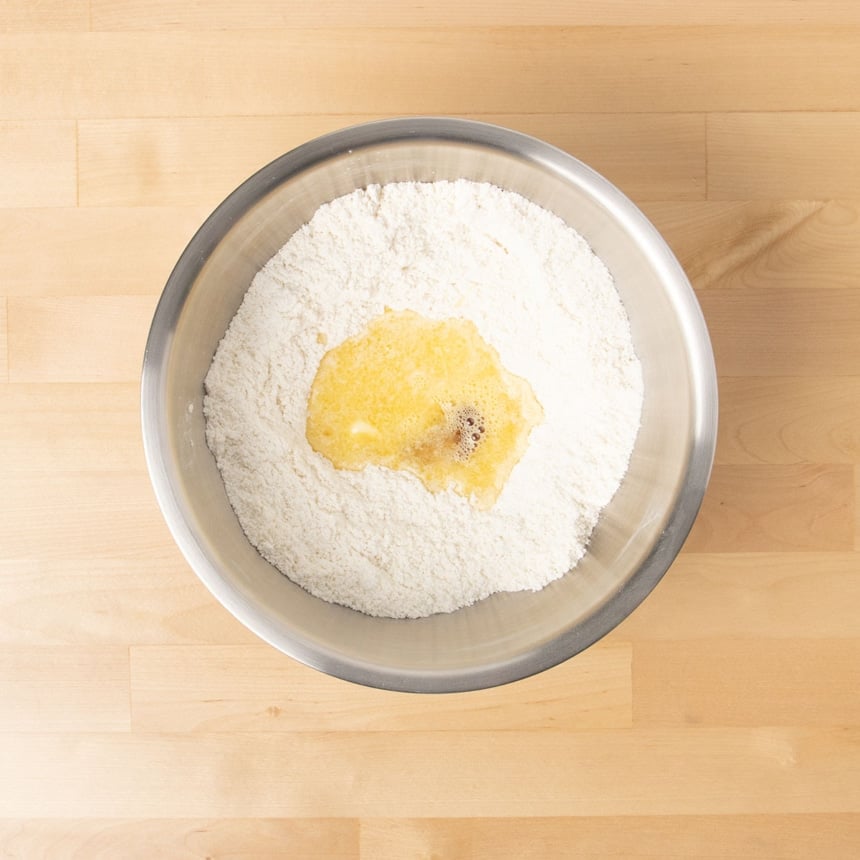
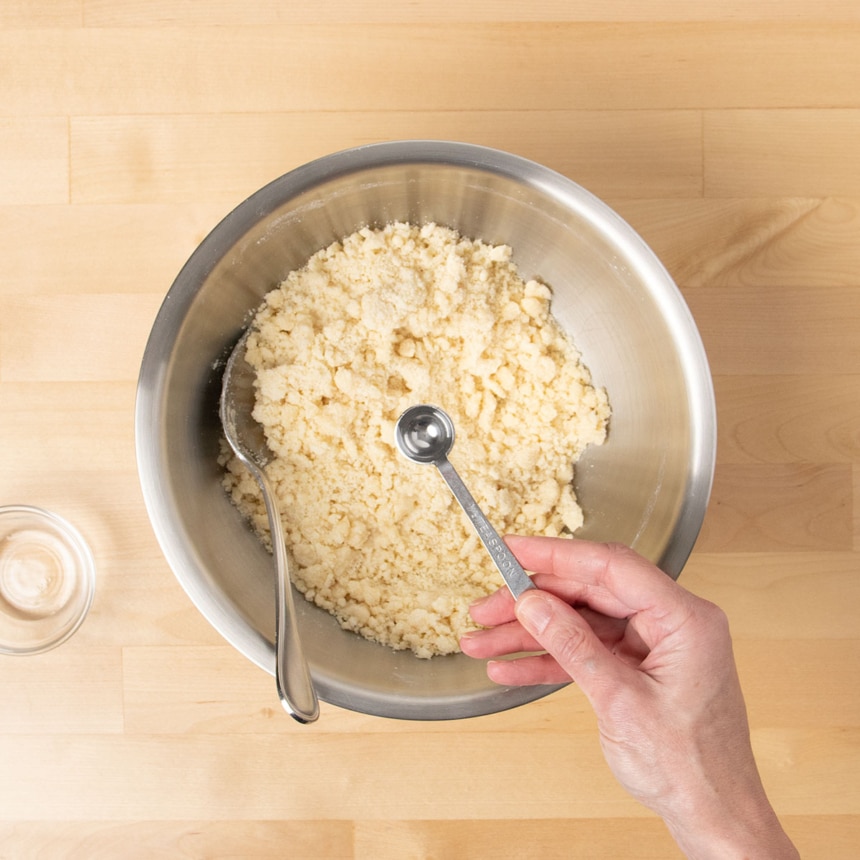

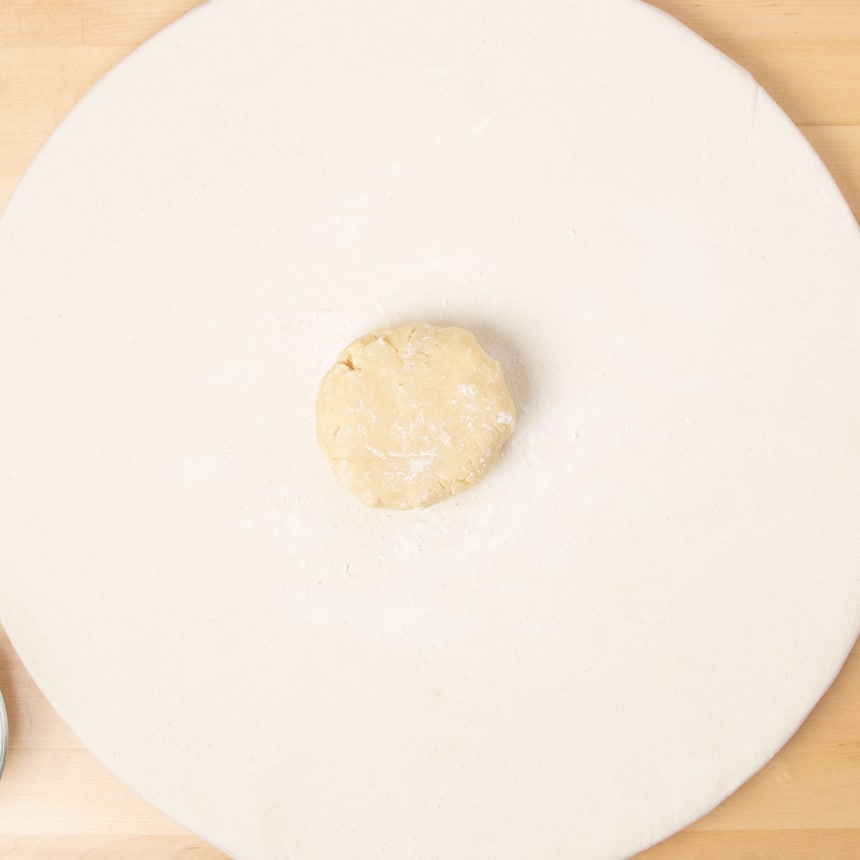
Prepare the dough, and bake the cookies
- Roll out the dough about 1/3-inch thick, sprinkling with more tapioca starch as needed to prevent sticking
- Cut out well-defined shapes with a cookie cutter
- Place the shapes about 1 inch apart (or less, they won't spread) on a lined baking sheet
- Bake at 325°F or until just set it in the center.
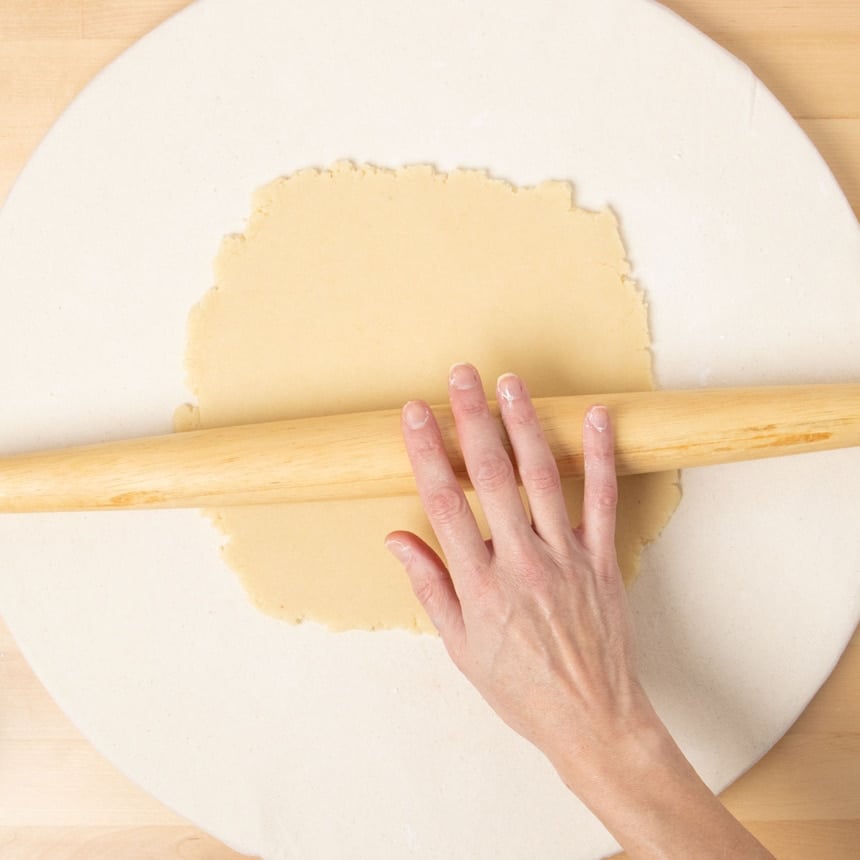

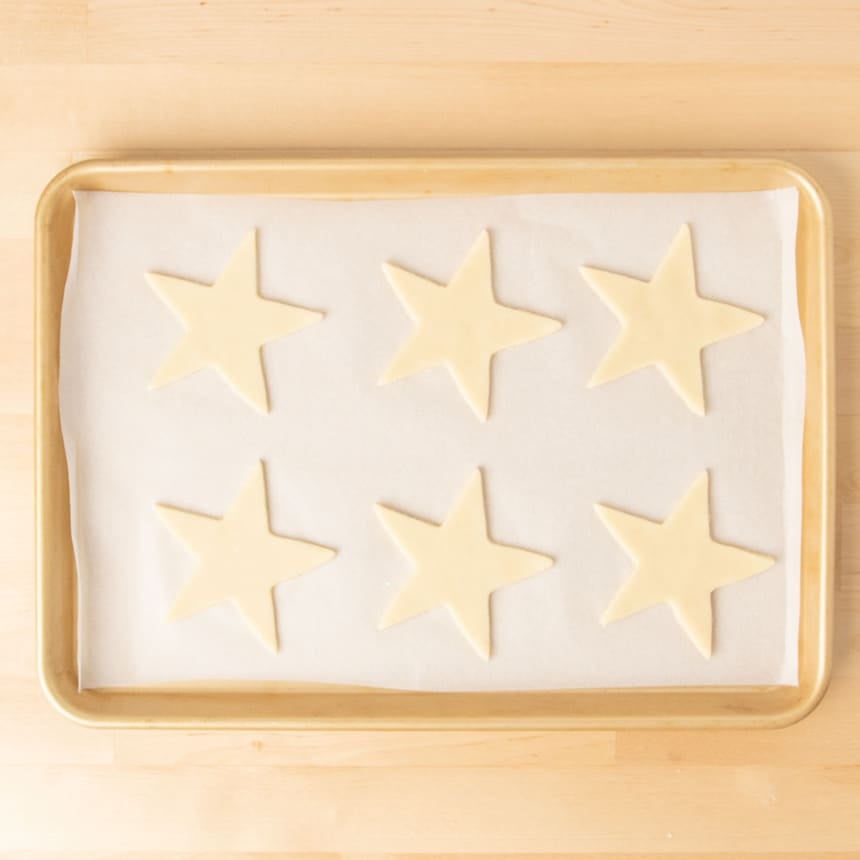
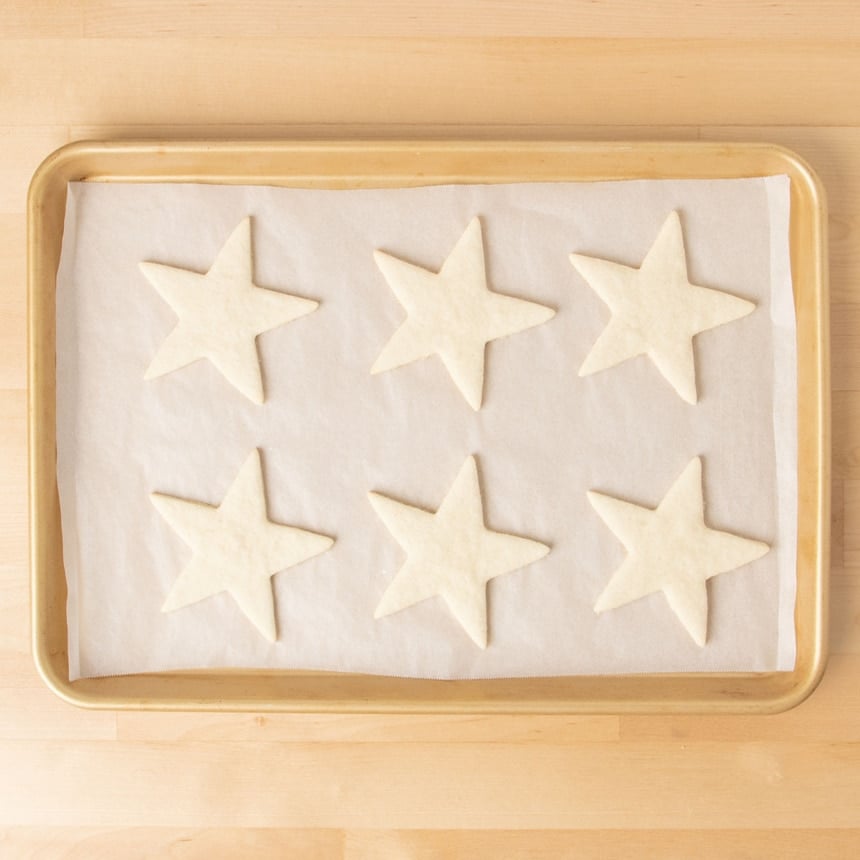

What makes a great cutout cookie?
Cutout cookies are the kind of cookie that require you to roll out cookie dough, and then cut out shapes with a cookie cutter. They're most often gluten free sugar cookies, which are a simple mix of flour, baking powder, salt, sugar, butter and egg. But they could be gluten free gingerbread cookies or even a gluten free gingerbread house.
A proper cutout cookie will hold its shape just as you cut it, even if that shape has twists, turns, bends, or corners. That means that it's ready to celebrate any holiday, any day of the year.
Whether it's a birthday, and you want to surprise your 5-year-old by spelling out his name in sugar cookies, it's Easter and you want to make eggs and bunnies, or it's Valentine's Day, and it's all about the hearts, a good sugar cookie recipe has you covered.
Combining almond flour and tapioca starch/flour into an all-purpose flour
I love baking with almond flour and rarely bake with it without adding some tapioca starch/flour to create a proper balance of ingredients. The best ratio of these flours is usually 40% almond flour, 60% tapioca starch.
That ratio is the best if you're trying to create a recipe that closely resembles the type that you'd make with a rice-based flour blend (or conventional all-purpose flour). Since almond flour has a lot of fat, you'll typically use about half the amount of fat that you might otherwise expect.
Almost Paleo
Most of the time I create a recipe with this amazing set of 2 gluten free flours, it's a Paleo recipe. That means no dairy, no grains, and no refined sugars. For this recipe, I started with my soft frosted sugar cookies recipe and mostly just swapped out that almond/tapioca flour blend and reduced the fat by half.
The only way I was going to be able to create an almond flour sugar cookie that was light in color was to use white sugar, and Paleo granulated sugar is brown (coconut palm sugar). Since I'm trying to make a “normal” looking and tasting sugar cookie, appearance mattered.
If you're looking for a more virtuous almond flour cookie, try my almond flour chocolate chip cookies. They're lightly sweet, refined sugar free when made with coconut sugar, dairy free when made with virgin coconut oil, and grain free, too.
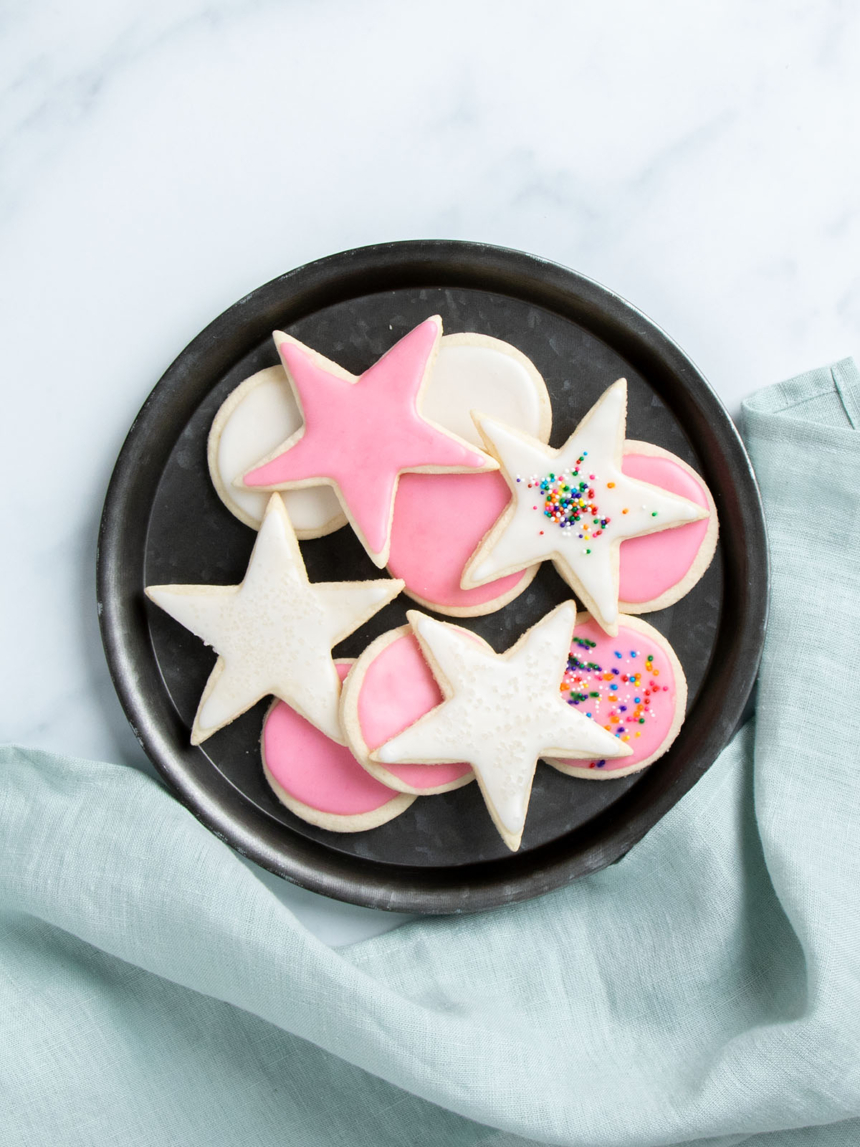
Recipe tips & tricks
Yes, this recipe is an easy one, but I've still got a few extra tips for you to follow to make sure your sugar cookies turn out perfect every time.
Use finely ground blanched almond flour
Only use finely ground almond flour. And make sure you go for the blanched almond flour, too, as that means the skins have been removed, so you'll get lighter, more traditional sugar cookies. While simple, this recipe is pretty specific, and coarse almond flour or almond meal just won't work.
Don't chill the dough
With these almond flour sugar cookies, there's no need to refrigerate or freeze the dough. It's ready to go as soon as you've finished kneading it.
Add water slowly
This recipe is a simple one-bowl-and-a-spoon recipe, which is great. When you're following the recipe, you'll notice that the dry ingredients severely outnumber the wet ingredients.
When you add the melted butter, egg, and vanilla, you may think the dough will never come together. It will, but it will likely need a bit of water to bring it together, you'll knead the dough with clean hands. You may be tempted to add water more quickly, and keep going until the dough comes together easily with a spoon. Instead, add the water very, very slowly and let touch be your guide.
When the dough holds together after kneading, it will roll out cleanly and the cookies will keep their clean lines during baking. Too much water will cause the cookies to spread during baking. Remember, you can always add more water, but you can't take any out.
Stick to the recipe
Baking is science. The dough has to be suitable for cutting and absolutely must hold its shape while baking. Stick to the recipe as best you can, even if you'd rather get started immediately and not have to order, for example, tapioca starch. It's such a useful ingredient!
If you add extra flavorings, even just almond extract, you change the wet to dry ratio. Similarly, if you remove the vanilla extract, you'd change the wet to dry ratio so replace it with some extra water or another flavoring.

Popular ingredient substitutions
This recipe is naturally gluten free as it doesn't contain any wheat flour or other gluten grains, but it does contain eggs and dairy. Here are my suggestions for the best options for substitutions to accommodate different dietary needs.
Tapioca starch/flour
Tapioca starch has no precise substitute, I'm afraid. It's a unique flour (sometimes called a starch, but there is no difference regardless of the name). You can sometimes replace it with superfine sweet white rice flour, also known as glutinous rice flour.
Like almond flour, quality varies tremendously among brands of tapioca starch. I almost always buy tapioca starch/flour from Nuts.com since it's great quality at a great price. Authentic Foods also makes a great quality product, too.
Sugar
You can use granulated coconut sugar in place of refined granulated sugar, gram for gram. To make sure that the coconut sugar dissolves completely, though, grind it first in a blender or food processor.
The cookies will turn brown, though, since coconut sugar is very dark brown in color. The coconut sugar will also add some flavor. The edges of the cookies will also likely not be as clean.
If you'd like to try making these cookies sugar free, I have a really good feeling about Lankato granulated monkfruit sweetener, gram for gram. It's a mix of monkfruit and erythritol. It does tend to be drying, though, so expect to add more water to bring the dough together.
Dairy
In place of melted butter in the cookie dough, try using block-style vegan butter like from Melt brand or Miyoko's Creamy brand. Avoid the type in a tub, which won't work. Virgin coconut oil (the kind that is solid at room temperature) should also work as a dairy-free substitute, but the cookies may spread.
Eggs
In place of the egg in this recipe, you can try using a “chia egg” (1 tablespoon ground white chia seeds + 1 tablespoon lukewarm water, mixed and allowed to gel). However, you may need to add a little more water, and you'll likely find that the dough doesn't bind together quite as well. You may also want to refrigerate the dough for 30 minutes before rolling and cutting.
Xanthan gum
I do consider the xanthan gum in this recipe to be optional, but it is essential to a clean edge on your cutout cookies, and a smooth texture. If you don't want to use xanthan gum or can't have it, you can try using an equal amount of konjac powder in its place. Guar gum works, too, just not quite as well in baked goods as in smoothies and other cold applications.
Storage instructions
You can store these almond flour sugar cookies, unfrosted, in the refrigerator for up to 5 days. If you've frosted them already, they should still go in the fridge in an airtight container, but they'll only last a day or two before they're past their best.
You can freeze the dough, or the baked, unfrosted cookies, too. Just wrap tightly, place in a freezer safe container, and keep in the freezer for up to three months.
FAQs
No, these cookies must be made using a combination of blanched almond flour and tapioca starch. No other flours will work.
Tapioca starch is unique in its ability to provide elasticity to baked goods. You can't replace it with another starch, like cornstarch, and get good results. But you might be able to replace it with superfine sweet white rice flour, also known as glutinous white rice flour.
No, almond meal is made with coarsely ground almonds that still have their skins intact. It won't work in this recipe.
I made gluten free royal icing with meringue powder because I wanted something that would set up completely and make portable stackable cookies. But you can also make this easy cookie icing with light corn syrup in place of meringue powder.
Almond Flour Sugar Cookies Recipe

Ingredients
For the cookies.
- 1 cup (120 g) finely ground blanched almond flour
- 1 ½ cups (180 g) tapioca starch/flour, plus more for sprinkling
- ½ teaspoon xanthan gum, (optional; makes the cookies more stable)
- ½ teaspoon baking powder
- ½ teaspoon kosher salt
- ⅜ cup (125 g) granulated sugar
- 4 tablespoons (56 g) unsalted butter, melted and cooled
- 1 (50 g (weighed out of shell)) egg, at room temperature, beaten
- 1 teaspoon pure vanilla extract
- lukewarm water, by the half-teaspoonful
Instructions
- Preheat your oven to 325°F. Line rimmed baking sheets with unbleached parchment paper and set them aside.
Make the cookie dough.
- In a large bowl, place the almond flour, tapioca starch, optional xanthan gum, baking powder, salt, and granulated sugar, and whisk to combine well.
- Add the butter, egg, and vanilla, and mix to combine. Add at least 1/2 teaspoonful of water, and mix it into the dough.
- If the dough has any spots that seem dry or crumbly, add more water by the half-teaspoonful and mix to combine.
- Using clean hands, knead the dough together until it forms a ball. It will be thick and relatively stiff. Sprinkle in more water as necessary to bring the dough together.
- Divide the dough in half and set one half aside, draped with a tea towel to prevent it from drying out.
Shape the cookies.
- Place the first half of the dough on a lightly floured surface, sprinkle the top lightly with more tapioca flour, and roll it out a bit less than 1/3-inch thick.
- Move the dough often to prevent it from sticking, sprinkling lightly with more tapioca flour as necessary.
- Using a 2 1/2-inch round cookie cutter or other shapes, cut out shapes of dough. Pull off the excess cookie dough away from the shapes you've cut.
- Place the cutout shapes of dough about 1-inch apart from one another on the prepared baking sheets. The cookies won't spread during baking, so just make sure they're not touching.
- Gather and reroll the scraps, and repeat the process with all the remaining dough until it’s all been used.
Bake the cookies.
- One at a time, place the baking sheets in the center of the preheated oven and bake until just set in the center (about 10 minutes).
- The edges of some of the cookies may brown slightly, but take them out before there is any significant browning.
- Remove the cookies from the oven and allow them to cool on the baking sheet for about 5 minutes or until stable before transferring them to a wire rack to cool completely.
Prepare any icing
- Once the cookies are cool, you can ice, glaze, or frost them them as you would any other sugar cookie.
Video
Notes
Nutrition
Nutrition information is automatically calculated, so should only be used as an approximation.

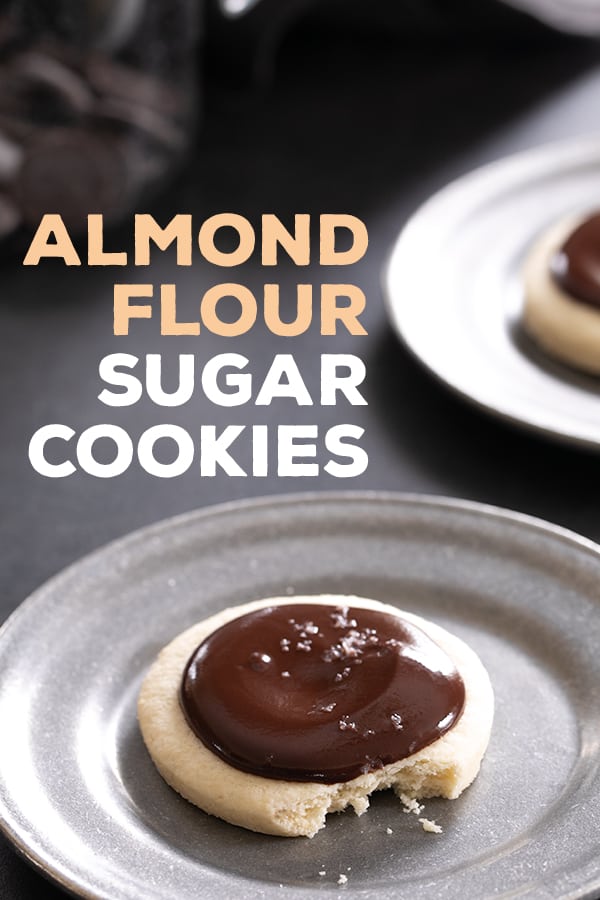

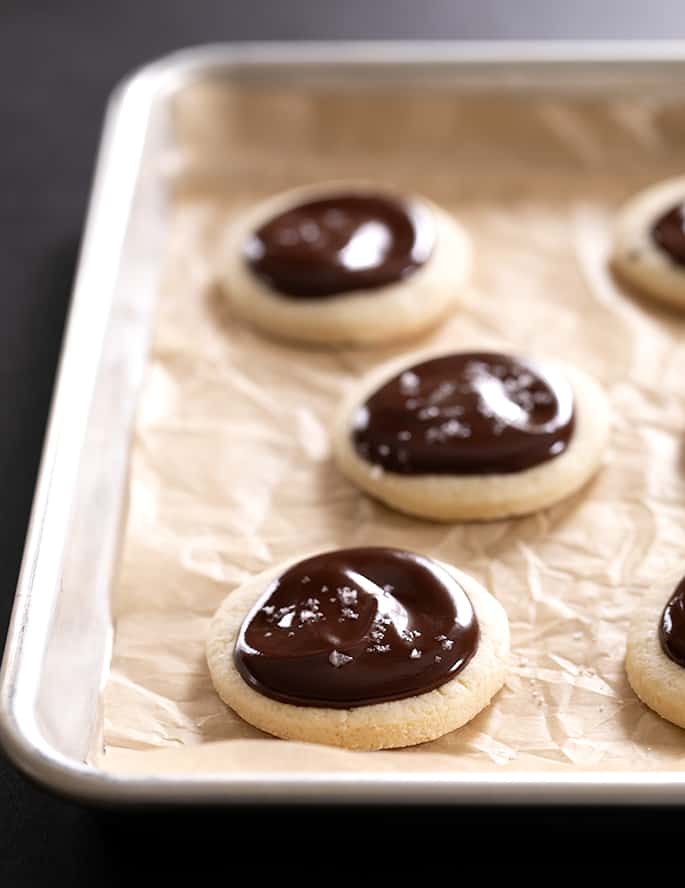
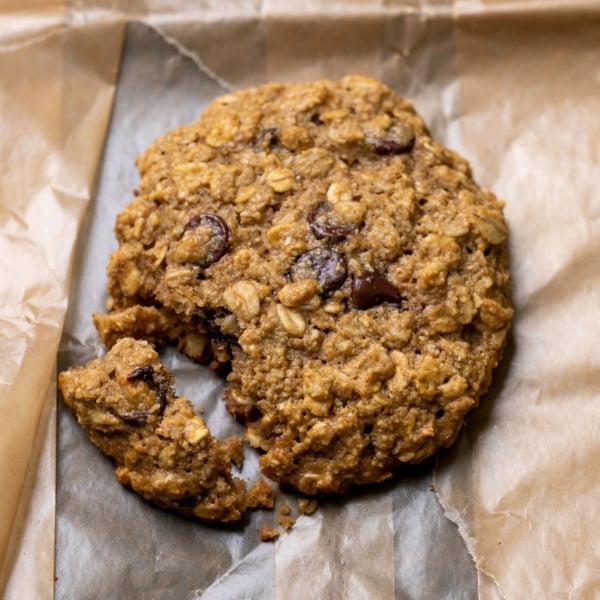
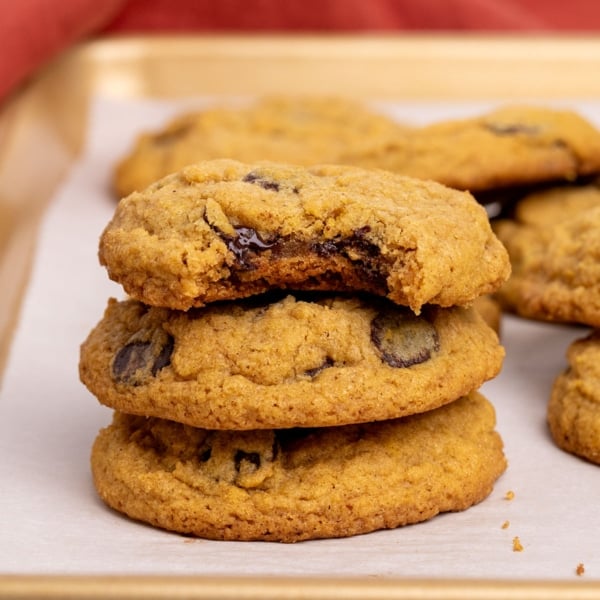
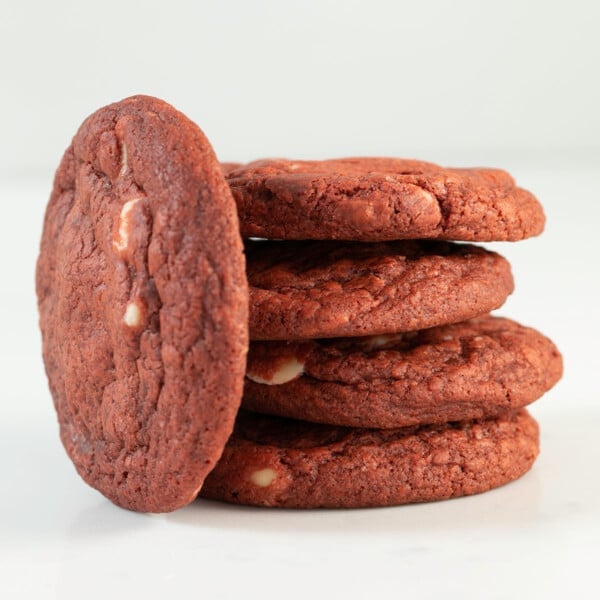
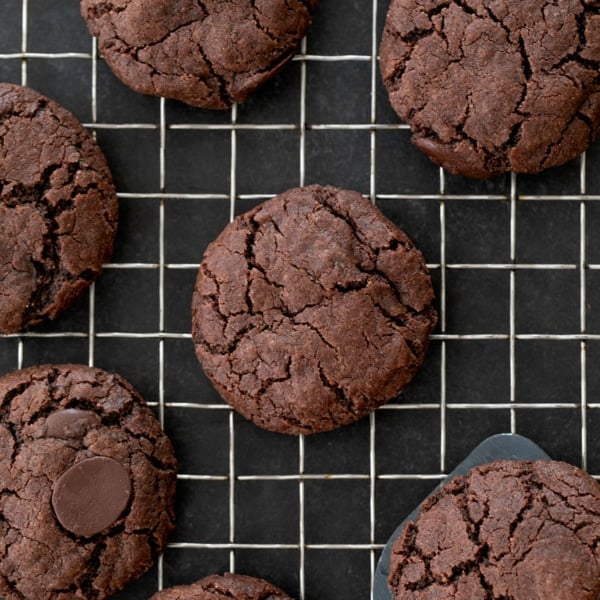









Simple, easy and delicious. This will be my go to recipe for cookies. Thank you!
That’s so great to hear, Eugenia. Thank you for sharing that, and I’m so glad you loved the sugar cookies!
Fantastic!! Perfect sugar cookie without the chocolate. I would recommend a bittersweet chocolate if you’re adding that In order to tone down the sweetness, but I am sensitive to recipes with too much sugar. I usually cut the amount of sugar called for in recipes but this recipe, I weighed everything as instructed. When I make them again I will use 5-10 grams less sugar and I am sure they will still be delicious! Thank you so much! Since, my husband changed to a gluten free diet for health reasons, I have searched for recipes that will satisfy his needs and I have used many on your site. This is my first review simply because I work full time and have so little time, but; I am actually home alone for once and have a few minutes while the second tray is cooling. I know this recipe will be repeated!
I’m so glad GFOAS has been useful to you, Connie. You sound like a busy lady! I’m glad to help in this way.